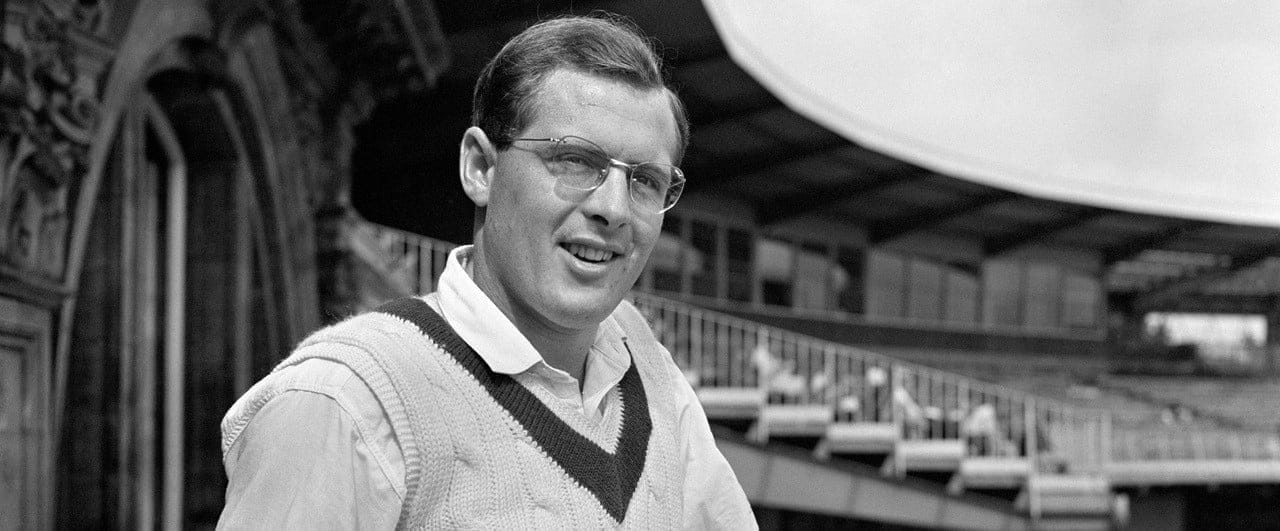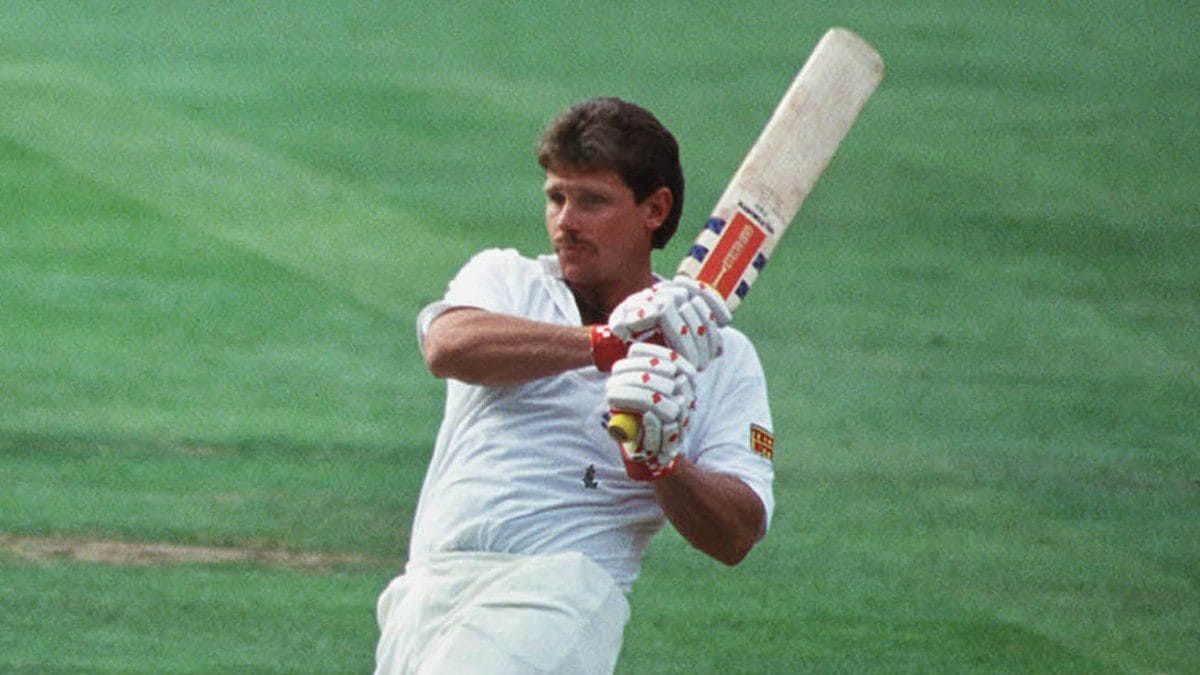Watching Virender Sehwag bat in the Pepsi IPL wearing spectacles made one think of Test cricketers over the years who have been similarly adorned. It is odd in a way, given the number of cricketing clichés suggesting the desirability of 20:20 vision (no pun intended) – “getting your eye in”, “seeing it like a football” – that one can put together a highly competitive unit of the opthalmicly challenged.
First, a caveat. There seems to be a belief in the blogosphere, particularly in Asia, that the great West Indian opener Gordon Greenidge wore glasses. Well, maybe he did, once in a while. All I can say is that, having watched him on numerous occasions playing for Hampshire, from his debut season in 1970 to his last season in 1987. I never saw him wearing spectacles on the field. But of course one is always happy, or, at least, if not happy, then, prepared, to be proved wrong. Either way, Greenidge was not a bespectacled cricketer: that is what we are talking about here.
Now, the openers (Sehwag like Greenidge does not qualify as he has not played enough in glasses). They pick themselves: Roy Marshall and Geoffrey Boycott. Apart from the fact that they were both right-handers, one cannot imagine two more different batsmen: picking them to bat together is a bit like hosting an imaginary dinner party for Dorothy Parker and Gordon Brown.

The Barbadian Marshall – perhaps the greatest of all white West Indian batsmen – threw in his lot with Hampshire after making a big impression on the West Indies’ tour of England in 1950. So, like his successor as Hampshire opener, Barry Richards, he played very little Test cricket. But, like Richards, there were few more enjoyable players to watch. Both exuded authority at the crease, but while Richards was grace and timing personified, Marshall had a power and flair that were typically Caribbean. His particular strengths were the front foot drive and the square cut, both preferably, off the fastest of bowlers. In his “One Hundred Greatest Cricketers” John Woodcock, no less, said that if he had felt able to select players purely for the pleasure they gave, Marshall would have been in. I can testify to this: the collective feeling of disappointment when Marshall failed is something I have never quite sensed since.
To say that the feeling was exactly the opposite with Boycott would be unfair, but he could be a bit turgid. He wore glasses for the first half dozen years or so of his professional career, switching to contact lenses after the 1968 season. One of his biographers, Leo McKinstry, says that this had a liberating impact on his batting. It is true that, like Bob Dylan, Boyott started old and got younger, at least up to a point (one can take this comparison only so far….). In 1967 he made a double century against India and was dropped for slow scoring though many thought his most exciting innings ever was his memorable 146 for Yorkshire in the Gillette Cup final against Surrey in 1965.
Reserves include the Indians Pankaj Roy and Anshnuman Gaekwad and the West Indian (also white) Steve Camacho.
Zaheer Abbas was a leading batsman for Pakistan for most of the 1970s and into the mid 1980s. He had a calmness at the crease that made him very easy on the eye. He made an immediate impact on his first tour of England in 1971 making 274 in the first Test at Edgbaston and following it up with 240 at The Oval in 1974. He was immensely prolific in first-class cricket especially for Gloucestershire and is the only batsman from the subcontinent to have scored a hundred first-class centuries. Some commentators, notably Simon Wilde in Letting Rip, his book about fast bowling, have suggested that “Zed” didn’t fancy the quick stuff, but his record was consistent over the years.
M J K (Mike) Smith was another highly effective run getter – principally for Warwickshire and England – from the late 1950s to the mid 1970s. He had a distinctive, open faced on-side style and could murder anything not of the highest quality. He led England with quiet authority in tours of India, South Africa and Australia in the mid 1966s. His South African opposite number, Peter van de Merwe, was another bespectacled middle-order batsman. He was – by a considerable distance – the last man to represent England at both cricket and rugby union.
Clive Lloyd was undoubtedly one of the dominant figures of cricket in the 1970s and early 1980s. Very tall and very powerful, he had a languid demeanour that gave little hint of his prowess both as an attacking left handed batsman and – in his younger days – as a predatory cover fielder. But it was his ascent to the captaincy of the West Indies in the mid – 1970s that set him apart. A genuine father figure, with only Deryck Murray and (to begin with) Lance Gibbs surviving from the Worrell / Sobers era, he and his young charges had first to endure the trauma of a five-one defeat to the Chappells. Dennis Lillee and Jeff Thomson in 1975-76. It was that defeat, however, which convinced Lloyd of the way forward: four lightning fast bowlers. West Indies’s dominance was unchallenged – ignoring the Packer years – from 1976 until well after Lloyd handed over to Vivian Richards in 1985. It has to be said that he was not quite such a successful captain of Lancashire: no doubt the absence of four West Indian pace bowlers had something to do with that.
Other middle order batsmen include David Steele who had prematurely grey hair to go with his glasses; he was dubbed the bank clerk who went to war as he marched out to face Lillee and Thomson at Lord’s in 1975 – and the Australian Dirk Welham.
The all-rounder is the indefatigable South African Eddie Barlow. He was slightly older than Barry Richards, so he played more Tests – 30 – averaging 45 with the bat and 34 with the ball. He was a solid and pugnacious batsman, equally at home opening or in the middle order, and a tidy and resourceful medium pace bowler. His slightly Bunteresque appearance belied not only great natural talent but also shrewdness and determination. He was one of the stars of the series between the Rest of the World XI and England in 1970, staged to replace the cancelled South African tour. Barlow scored 353 runs at an average of almost forty and took twenty wickets at nineteen apiece, including a hat trick and four wickets in five balls at Headingley.

Two leading wicketkeepers, Paul Downton and Mark Boucher – suffered serious eye injuries, Boucher’s career-ending. Perhaps they would have been all right if they had been wearing glasses. The fact is it is not easy to come up with the names of many bespectacled international stumpers. Dennis Gamsy played two Tests for South Africa against Australia in 1969-70. But my choice is Paul Gibb, a highly eccentric cricketer whose career straddled the Second World War. He wore glasses for a large portion of his career and kept wicket for England a number of times. A Cambridge Blue, he opened the batting for Yorkshire and gained selection for the MCC tour of South Africa in 1938-39, when he scored two Test centuries including one in the “timeless Test” at Durban. He went to Australia with Walter Hammond’s side in 1946-47 where he shared keeping duties with Godfrey Evans. He then disappeared completely from view before returning to play for Essex as a professional in 1950. This was highly unusual. A number of professionals – Hammond among them – had turned amateur but nobody had tried what might later have been called the Stansgate option (a la Tony Benn). MCC were so shocked they suspended his membership. Gibb later became a first-class umpire.
It is perhaps not surprising that there is a veritable cornucopia of bespectacled slow bowlers: Tommy Mitchell, the Derbyshire leg spinner went on the Bodyline tour of Australia but – surprise – didn’t get a game: Geoff Cope and Eddie Hemmings also of England; Dilip Doshi and Nirendra Hirwani of India, Murray Bennett of Australia.
Daniel Vettori turned himself into one of the most useful cricketers of modern times. An outstanding slow left arm bowler who took wickets with subtle variations of pace and flight, he also became an immovable object in the New Zealand lower-middle order. He was a match-winner in the limited-overs game. He seems to have been around for ever and is still only 35 but chronic injury seems to have got the better of him.
Vettori is unusual among modern cricketers in having persisted in wearing spectacles. The great Indian spinner, Anil Kumble, is far more typical, having abandoned glasses quite early in his career. This puts him in the Boycott category for the purposes of this list and he slips in. Kumble was quite different from his outstanding contemporaries, Shane Warne and Mushtaq Ahmed, who relied predominantly on big turning leg breaks. Although billed as a leg spinner, Kumble dealt almost exclusively in subtly varied googlies and top spinners. He finished up as Test cricket’s third highest wicket taker.

Not surprisingly bespectacled pace bowlers are not quite so plentiful. But Bill Bowes, a strapping Yorkshireman played a minor but memorable role in the Bodyline series in 1932-33, bowling Don Bradman first ball in the second Test at Melbourne. He took over 1600 first class wickets at an average of just over 16. He became a highly regarded cricket correspondent and his autobiography, Express Deliveries, is one of the best of its genre.
If you had to invent a bespectacled cricketer, it would be something like Devon Malcolm (although he too in time opted for contacts). Not a very good fielder, and a worse batsman. But take him to the end of a long run-up, put a ball in his hand and point him in the general direction of the stumps and he could do serious damage. Never was this seen to better effect than at The Oval in 1994 when he demolished a strong South African batting order with nine for 57. Sensitively handled – at The Oval he was just angry – he could have performed like that more often. He bowled fast until he was almost forty and had the heart of a lion.
R E Marshall, G Boycott, Zaheer Abbas, M J K Smith, C H Lloyd, E J Barlow, P.A. Gibb, D L Vettori, A Kumble, W E Bowes. D E Malcolm.
By Bill Ricquier, 20/05/2014
The article was published in ESPN Cricinfo: http://www.espncricinfo.com/thestands/content/story/746495.html




